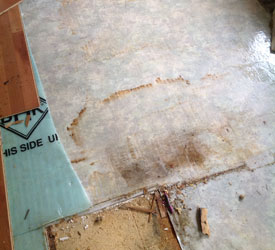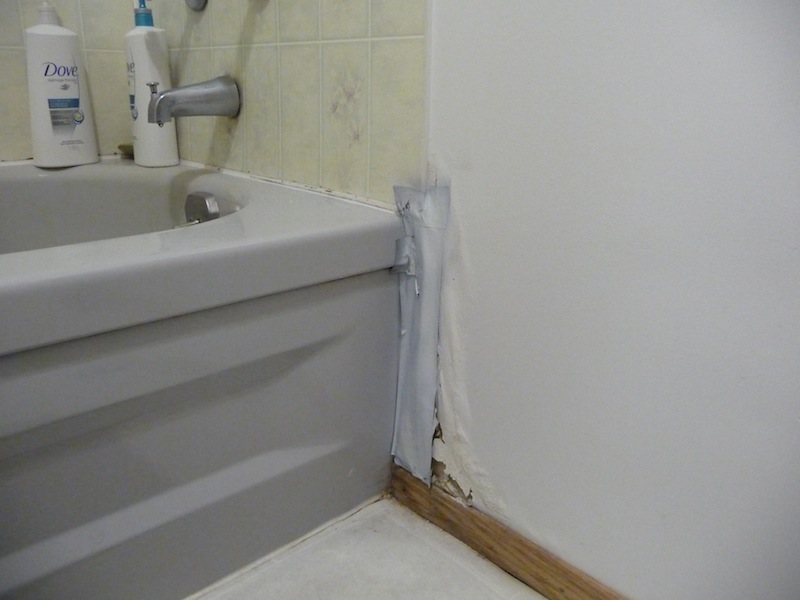How do you actually feel with regards to Looking for Signs of Water Damage in the Bathroom?

The shower room is exceptionally at risk for wet accumulation and potential water damage due to the frequent use of water in it. This article offers easy inspection techniques to help detecting water damage hazards.
The frequent use water in the washroom makes it exceptionally at risk for wet buildup and also prospective water damages. By checking it frequently, you can decrease water associated damages.
The following collection of examinations is very easy to do as well as ought to be done once in every three months in order to maintain your washroom healthy as well as to prevent potential water problems brought on by the tub, the shower, pipe joints and plumbing, sinks, closets, and also the toilet
Do not forget executing these examinations and also be complete while doing them. Bear in mind that these easy evaluations can save you a lot of cash by supplying very early indicators for water damage
Sinks and Cabinets
Sinks and also closets are subjected to moisture and moisture day-to-day as well as are frequently overlooked. Evaluate on a regular basis under the sink as well as on the counter top above it. Fix any type of drip in the trap as it may recommend drain problems. Check out the sink, slow-moving draining pipes may show an obstructed drain. Change sink seals if they are split or loose.
Bathtub and also Shower
The shower as well as bathtub call for special attention and also maintenance. Check the floor tiles as well as replace if split. Make sure that there is no missing out on grout in between the tiles. Check and change cracked caulking at joints where the wall surfaces meet the flooring or the bath tub. Clogged drains pipes and pipes troubles will protect against the tub from drying out and might indicate major troubles below the bath tub. Speak with a specialist immediately to avoid architectural damage. Focus on discolorations or soft areas around the bath tub walls as they may show an internal leakage.
Plumbing
Signs for water damages are hard to discover given that the majority of pipes are mounted inside the walls.
Pay unique focus to flooring and also walls wetness and also spots as they might indicate an undetectable plumbing trouble. Inspect dampness levels in adjoining areas as well.
The Bathroom
The commode is a susceptible water joint. Examine the water lines and look for leakages around the toilet seat, in the pipe, and also under the water tank. If you find any kind of signs of wetness on the flooring around the toilet, check for leakages in the toilet edge as well as container seals.
Be aware that hanging toilet dish antiperspirants increases the possibilities for blockages.
Water Damage Signs In The Bathroom To Avoid Cleanup
Musty smell
This is one of the easiest signs to catch because musty smells are so odorous. The damp, earthy, moldy smell should be a big red flag. The smell will develop when moisture gets trapped in surfaces, and begins to facilitate mold growth. Leaking pipes under cabinets, inside walls, and behind shower fixtures will cause moisture to stay trapped and not dry, which will lead to mold growth and spread. As soon as you notice any musty smells in your bathroom, have it checked for hidden water damage and cleanup signs.
Visible mold
If the smell isn’t there to give it away, sometimes you will actually see mold growth. Finding mold in your bathroom is a serious problem, because mold is very harmful to your health. By the time mold growth is visible, it also means that water damage has already occurred and been present for some time. The only way the mold problem can be resolved is to find the source of the moisture and get it stopped. To safely and adequately remove mold, you need to have professionals handle the remediation. Do not waste any time in getting mold problems addressed, fixed, and sanitized so that you can protect you and your family from the many respiratory symptoms caused by mold exposure.
Damaged floors
Bathroom floors should be able to withstand some exposure to water while still remaining in good condition. However, when excess exposure or water leaks occur, they will begin to damage even the most water-resistant flooring. If you notice any cracking, bubbling, staining, or warping on your bathroom floors, there is probably a water leak somewhere causing the distortion. If you notice areas of the floor have become softer, or even have a spongy feeling, there is probably damage to the subfloor. Subflooring is typically made up of plywood. When plywood is exposed to water or moisture, it will absorb it. Once it has become saturated, the weight of the excess water will cause the wood to swell and soften. Check the floors in your bathroom frequently to catch any of these sings before they lead to damaged subflooring.
Changes on walls
When water leaks behind walls, it will cause changes in the drywall. Peeling plaster, blistering paint, and soggy wallpaper are all good indicators that excess water is building up behind the wall. Water leaking behind drywall will cause it to swell and be soft to the tough. If you start to notice gaps along the trim of your walls, or where tile meets the wall, it could also be a strong indicator that there is a leak behind the wall. Any changes, distortion, or damage on the walls should be evaluated as soon as you notice it to prevent further water damage and cleanup.

Hopefully you liked our article about How to Prevent Bathroom Water Damage. Thanks a ton for taking the time to read through our blog. So long as you enjoyed reading our blog post kindly make sure you remember to pass it around. We thank you for reading our article about How to Repair and Prevent Bathroom Water Damage.
Request An Estimate